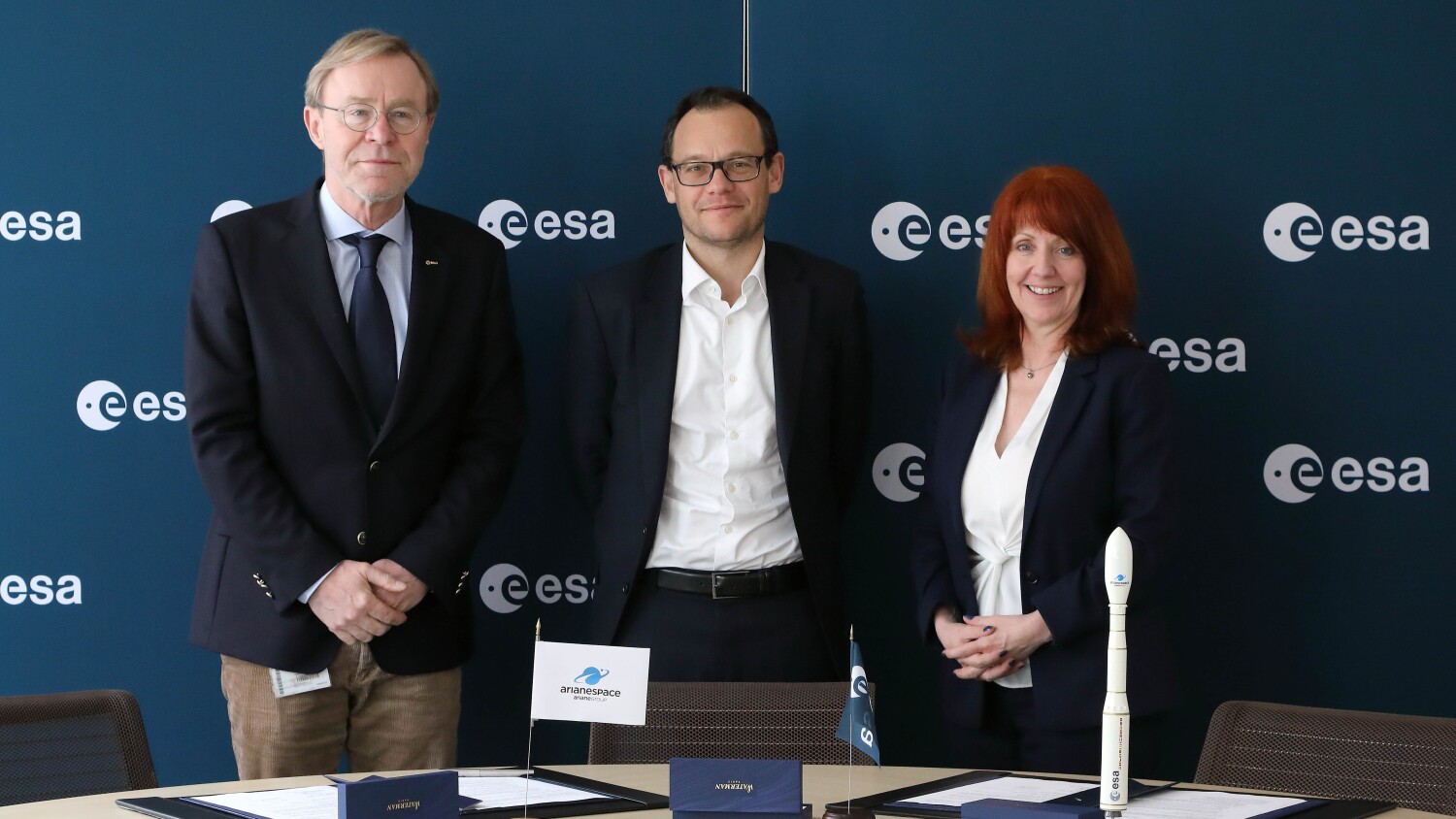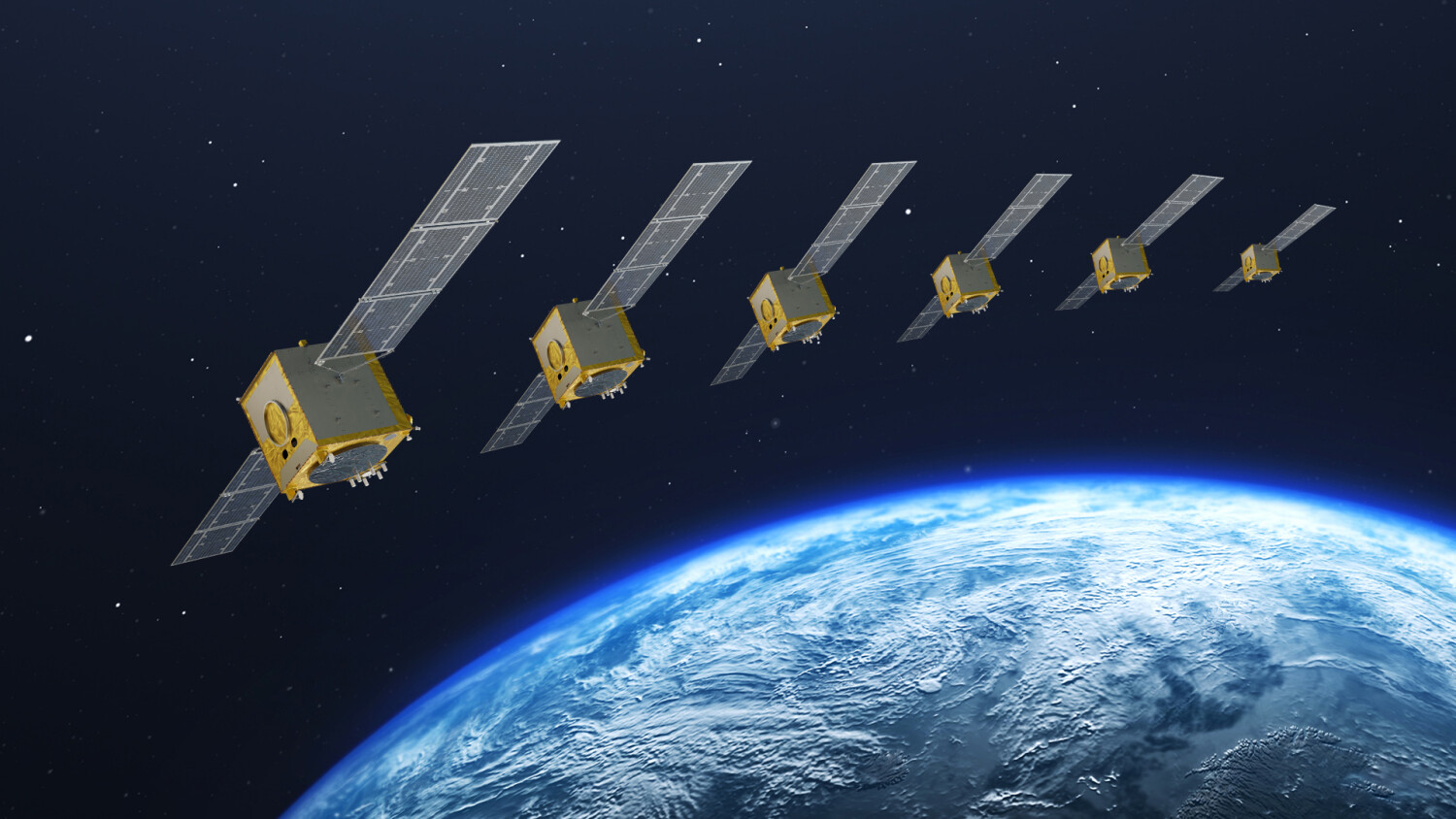Arianespace today orbited two geostationary communications satellites: Optus and Defence C1 for the Australian operator Optus and the Australian Department of Defence, and BSAT-2c for the Broadcasting Satellite System Corporation (B-SAT) of Japan under terms of a turnkey contract with Orbital Sciences Corporation of the United States.
Twelfth successful launch
With its 12th successful mission, the Ariane 5 Generic launcher confirmed its technical and operational maturity.
This latest success comes two months after the previous Ariane 5 flight — which also orbited a dual-satellite payload, and less than 10 days after Starsem’s successful Soyuz commercial mission with the European Space Agency’s Mars Express spacecraft.
Several days prior to launch, a ministerial-level ESA Council meeting authorized the Ariane 5 support plan and approved construction of a Soyuz launch pad at the Guiana Space Center, Europe’s Spaceport. These decisions give Arianespace the means to operate a full range of launch vehicles that respond to all client requirements.
Prestigious customers: Australia, Japan and the United States
The choice of Ariane by major space telecom manufacturers and operators in the United States, Japan and Australia clearly reflects international recognition of Arianespace’s top-flight launch service.
Optus and Defence C1 is the second Australian satellite to be launched by Ariane. In September 1987, Ariane orbited the Aussat K3 satellite, while Singtel — the parent company of operator Optus — had its ST-1 spacecraft launch by Ariane in 1998.
BSAT-2c is the 19 satellite launched by Ariane for Japan, and the fifth for telecom operator B-SAT — following BSAT-1a on Flight 95, BSAT-1b on Flight 108, and BSAT-2a and BSAT-2b on Flights 140 and 142. BSAT-2C is the fifth satellite built by Orbital Sciences Corporation to be launched by Arianespace using an Ariane 5 since March 2001.
Flight 161 at a glance
Flight 161 was carried out by an Ariane 5 Generic launcher from Europe’s Spaceport in Kourou, French Guiana. Liftoff was on Wednesday, June 11, 2003 at 7:38 p.m. local time in Kourou (22H38 GMT, 6:38 p.m. in Washington, D.C., 12:38 am in Paris on June 12, and at 7:38 am in Tokyo and 8:38 am in Sydney on June 12).
Provisional parameters at injection of the storable propellant upper stage were:
Perigee: 590 km for a target of 590 km (±3 km)
Apogee: 35,798 km for a target of 35,826 km (±160 km)
Inclination: 7.00 degrees for a target of 6.99 degrees (±0.06°)
Optus and Defence C1: Mitsubishi Electric Corporation of Japan is the prime contractor, and is responsible for all communications systems. Space Systems Loral of the United States designed, assembled and integrated the bus and satellite system.
Weighing about 4,725 kg at liftoff, it will be positioned at 156 degrees East. Equipped with 24 Ku-band transponders, it will provide commercial communications services for Australia, New Zealand, Southeast Asia and Hawaii. It also carries 4 X-band transponders, 4 Ku-band transponders and 6 UHF channels to provide dedicated links for the Australian Department of Defence.
Built by Orbital Sciences Corporation in Dulles, Virginia using the Star-1 platform, BSAT-2c weighed 1,275 kg at liftoff. It will be positioned at 110 degrees East. Equipped with 4 Ku-band transponders, it will provide direct TV broadcast services throughout Japan over its design life of 10 years. Over 16 million households receive programs broadcast by the B-SAT satellite.







